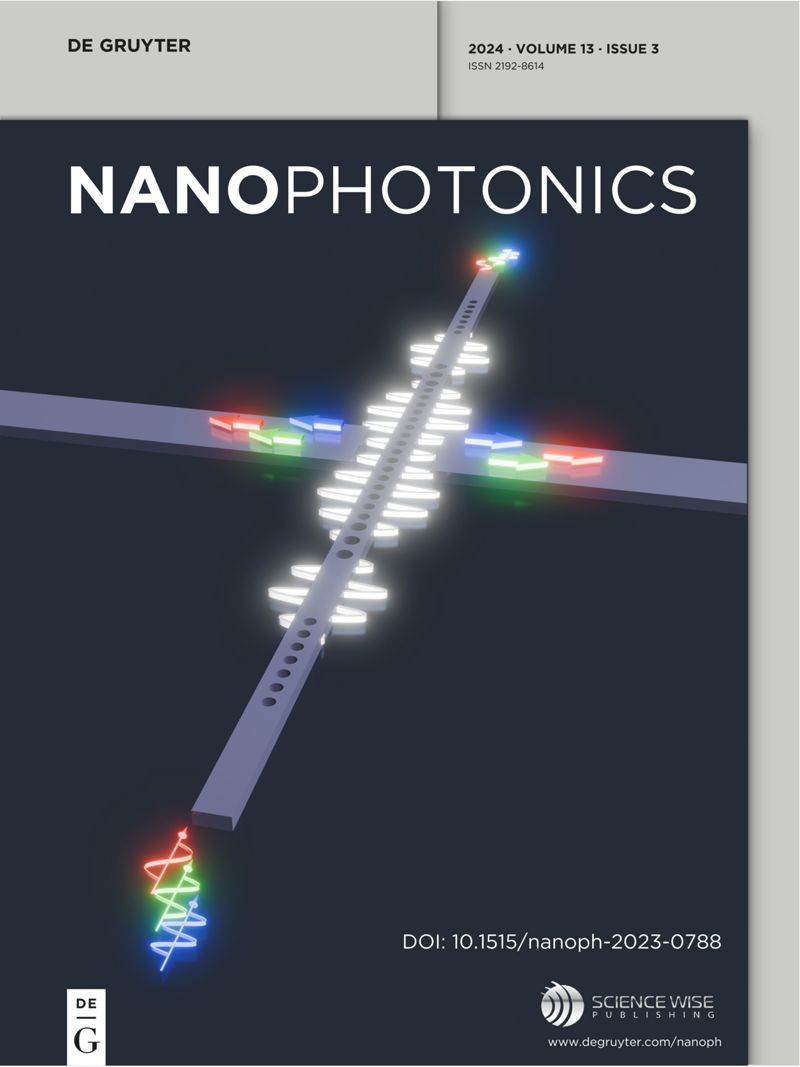Quantum-enhanced detection of viral cDNA via luminescence resonance energy transfer using upconversion and gold nanoparticles
IF 6.6
2区 物理与天体物理
Q1 MATERIALS SCIENCE, MULTIDISCIPLINARY
引用次数: 0
Abstract
The COVID-19 pandemic has profoundly impacted global economies and healthcare systems, revealing critical vulnerabilities in both. In response, our study introduces a sensitive and highly specific detection method for cDNA, leveraging Luminescence Resonance Energy Transfer (LRET) between upconversion nanoparticles (UCNPs) and gold nanoparticles (AuNPs), and achieves a detection limit of 242 fM for SARS-CoV-2 cDNA. This innovative sensing platform utilizes UCNPs conjugated with one primer and AuNPs with another, targeting the 5′ and 3′ ends of the SARS-CoV-2 cDNA, respectively, enabling precise differentiation of mismatched cDNA sequences and significantly improving detection specificity. Through rigorous experimental analysis, we established a quenching efficiency range from 10.4 % to 73.6 %, with an optimal midpoint of 42 %, thereby demonstrating the superior sensitivity of our method. Our work uses SARS-CoV-2 cDNA as a model system to demonstrate the potential of our LRET-based detection method. This proof-of-concept study highlights the adaptability of our platform for future diagnostic applications. Instrumental validation confirms the synthesis and formation of AuNPs, addressing the need for experimental verification of the preparation of nanomaterial. Our comparative analysis with existing SARS-CoV-2 detection methods revealed that our approach provides a low detection limit and high specificity for target cDNA sequences, underscoring its potential for targeted COVID-19 diagnostics. This study demonstrates the superior sensitivity and adaptability of using UCNPs and AuNPs for cDNA detection, offering significant advances in rapid, accessible diagnostic technologies. Our method, characterized by its low detection limit and high precision, represents a critical step forward in developing next-generation biosensors for managing current and future viral outbreaks. By adjusting primer sequences, this platform can be tailored to detect other pathogens, contributing to the enhancement of global healthcare responsiveness and infectious disease control.利用上转换和金纳米粒子发光共振能量转移的量子增强病毒cDNA检测
2019冠状病毒病大流行深刻影响了全球经济和医疗体系,暴露出两者的严重脆弱性。为此,本研究引入了一种灵敏、高特异性的cDNA检测方法,利用上转换纳米粒子(UCNPs)和金纳米粒子(AuNPs)之间的发光共振能量转移(LRET),实现了SARS-CoV-2 cDNA的检测限为242 fM。该传感平台利用UCNPs与一种引物结合,AuNPs与另一种引物结合,分别靶向SARS-CoV-2 cDNA的5 ‘和3 ’端,能够精确区分不匹配的cDNA序列,显著提高检测特异性。通过严格的实验分析,我们建立了10.4%至73.6%的淬火效率范围,最佳中点为42%,从而证明了我们的方法具有优越的灵敏度。我们的工作使用SARS-CoV-2 cDNA作为模型系统,以证明我们基于lret的检测方法的潜力。这项概念验证研究强调了我们的平台对未来诊断应用的适应性。仪器验证证实了aunp的合成和形成,解决了纳米材料制备实验验证的需要。通过与现有的SARS-CoV-2检测方法的比较分析,我们的方法对目标cDNA序列具有低检测限和高特异性,强调了其靶向诊断COVID-19的潜力。该研究证明了使用UCNPs和AuNPs进行cDNA检测的优越敏感性和适应性,为快速、可获取的诊断技术提供了重大进展。我们的方法具有低检测限和高精度的特点,是开发用于管理当前和未来病毒爆发的下一代生物传感器的关键一步。通过调整引物序列,该平台可用于检测其他病原体,有助于提高全球卫生保健响应能力和传染病控制。
本文章由计算机程序翻译,如有差异,请以英文原文为准。
求助全文
约1分钟内获得全文
求助全文
来源期刊

Nanophotonics
NANOSCIENCE & NANOTECHNOLOGY-MATERIALS SCIENCE, MULTIDISCIPLINARY
CiteScore
13.50
自引率
6.70%
发文量
358
审稿时长
7 weeks
期刊介绍:
Nanophotonics, published in collaboration with Sciencewise, is a prestigious journal that showcases recent international research results, notable advancements in the field, and innovative applications. It is regarded as one of the leading publications in the realm of nanophotonics and encompasses a range of article types including research articles, selectively invited reviews, letters, and perspectives.
The journal specifically delves into the study of photon interaction with nano-structures, such as carbon nano-tubes, nano metal particles, nano crystals, semiconductor nano dots, photonic crystals, tissue, and DNA. It offers comprehensive coverage of the most up-to-date discoveries, making it an essential resource for physicists, engineers, and material scientists.
 求助内容:
求助内容: 应助结果提醒方式:
应助结果提醒方式:


